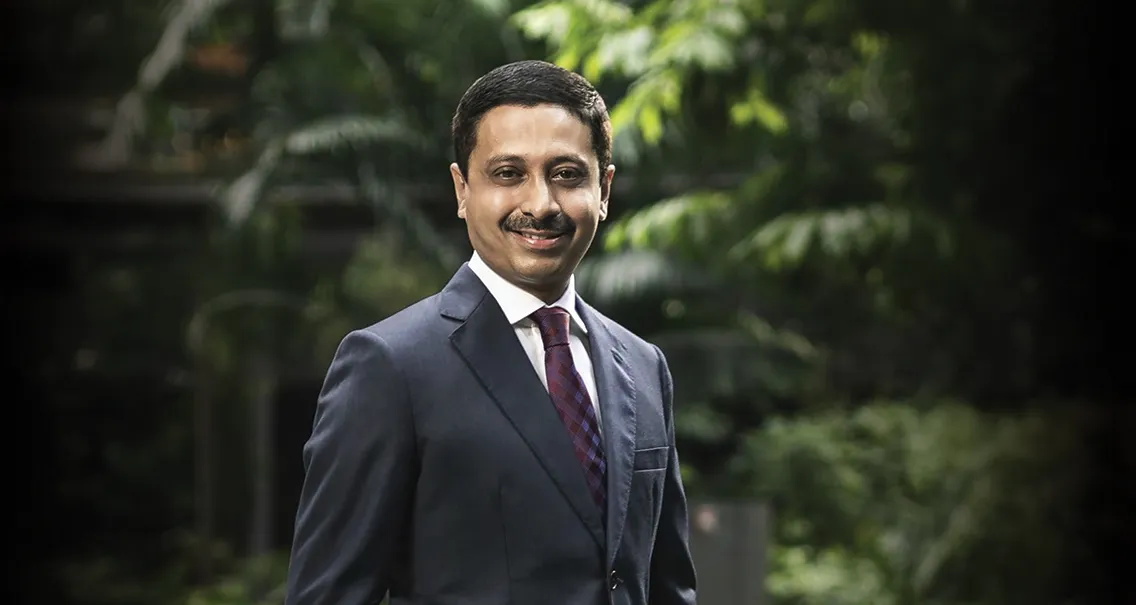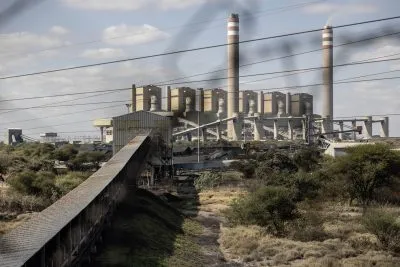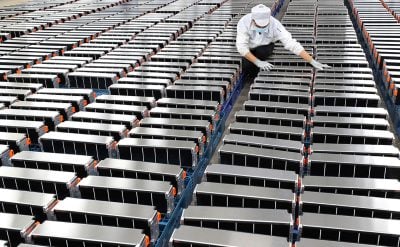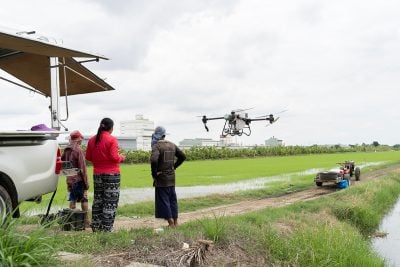This article was produced with the support of Olam Agri
How does Olam Agri see its role in shaping the future of global food systems, particularly regarding affordability, accessibility, and sustainability?
As a large agribusiness with a global origination footprint across several staple food and other agriculture products, well-established processing capabilities, and a strong presence in high-growth emerging markets, we are able to source important staple crops like rice and wheat from places where they are widely produced and move them to places where they are needed the most, processing them where necessary, often to help meet the food security agenda of many of these markets.
This enables us to make food and agricultural products accessible to several countries and their people, while keeping them affordable, even during trade disruptions when we’ve often had to quickly pivot our origination sources to be able to meet demand. We also work closely with several countries to identify opportunities for domestic crop production to support their local agriculture agenda and food demand, especially in Africa, where we’ve established ourselves as a leader in food and agriculture over the past 34 years.
Ultimately, what drives us is our purpose to transform food and agriculture for a more food-secure and sustainable future. Our business hinges on the success of farmers and we actively work with them, particularly smallholder farmers who are more vulnerable, to ensure that they have a profitable and productive business, are adopting or at least exploring climate-smart farming methods and are ensuring that the soil is kept healthy through regenerative agriculture. Only then can we possibly have sustainable agricultural supply chains that will ensure adequate food production for future generations.
With agriculture vulnerable to climate change, how is Olam Agri supporting farmers to balance agricultural productivity with environmental sustainability?
We work directly with hundreds of thousands of farmers and we see first-hand the devastating impact of climate change and the extreme and unpredictable weather patterns on agriculture and livelihoods. The year 2023 broke records in the number of heatwaves, droughts, wildfires and floods, both in intensity and in frequency; and things are likely to only get worse. Often, the impact is disproportionately more destructive on smallholder farmers in the Global South, who have less access to resources and arguably less support to transition to more sustainable farming models.
Three key objectives, working with farmers directly and through our partners, are to improve their livelihoods through improved productivity, yields and profits; to implement agriculture practices that help with climate mitigation and adaptation; and to implement regenerative agriculture practices that help with soil health.
In our rice supply chain in key exporting markets India, Thailand and Vietnam, as well as in Nigeria, we are working with more than 50,000 smallholder farmers to introduce them to effective farming techniques, such as alternative wetting and drying, that help them reduce their water usage, reduce fertiliser usage, and reduce greenhouse gas emissions. Not only is this better to help them become more climate resilient and improve the soils, but it also helps their profitability.
We also support farmers by providing access to high-yielding, climate-resilient seed varieties and promoting crop diversification. This helps farmers increase their household incomes and build resilience against the impacts of climate change.
In Nigeria, for example, we recently released a new heat-tolerant and early maturing durum wheat variety which is suited for cultivation during the dry harmattan season. This development enables wheat millers and pasta producers to shift from relying on imports to sourcing locally grown wheat. This initiative is part of our Seeds for the Future programme.
Olam Agri has championed regenerative agriculture and biodiversity. Can you share specific initiatives that highlight your commitment in these areas?
We view regenerative agriculture and biodiversity as fundamental to building sustainable and resilient food systems. This method promotes soil health through practices such as cover cropping, crop rotation, no tillage, reduced chemical use, optimised fertiliser use, and holistic grazing. These techniques not only boost soil fertility and enhance water retention but also increase biodiversity, sequester carbon, and contribute to more resilient agricultural systems.
When implemented at the landscape level, regenerative agriculture enables farmers and stakeholders to engage with local communities, restore natural habitats, and manage water sustainably. This holistic approach positively impacts both farm-level outcomes and the surrounding ecosystem, ensuring a sustainable and productive future for agriculture.
In 2024 we launched the largest certified regenerative agriculture programme globally in the cotton supply chain, to meet the growing demand for traceable and sustainably grown cotton. This covers cotton produced in the United States and Côte d’Ivoire, with Australia and Brazil to follow. Through initiatives such as rainwater harvesting, minimal soil disturbance, organic manure application and agroforestry, Olam Agri is helping cotton farmers improve resilience against climate change.
In the Asia-Pacific region Olam Agri has been collaborating with the public and private sectors since 2016 to amplify the reach and impact of its regenerative agriculture projects. These efforts are realised through various sustainable rice programmes currently in implementation across India, Thailand and Vietnam, the top three rice exporting nations that collectively account for nearly 70% of the world’s rice. To create a sustainable global model that is scalable, Olam Agri works closely with governments, donors, civil society, customers and influential players in the rice industry to drive these programmes. These initiatives underscore our deep commitment to embedding regenerative agriculture and biodiversity conservation into our business model, benefitting not only the environment but also the communities we work with
What role does technology play in shaping Olam Agri’s medium-term growth and sustainability goals? Are there specific innovations you are excited about?
Technology plays a pivotal role in shaping Olam Agri’s medium-term growth and sustainability goals. Our commitment to leveraging advanced technologies is central to our strategy for enhancing operational efficiency, reducing environmental impact, and driving sustainable growth.
One of the key areas where technology is making a significant impact is in our Monitoring, Reporting, and Verification (MRV) processes. By integrating cutting-edge digital tools and platforms, we can collect, analyse, and report data with greater accuracy and transparency. This not only helps us track our progress towards sustainability targets but also ensures compliance with regulatory requirements and enhances stakeholder trust.
We are particularly excited about several specific innovations that are transforming our operations:
Digital Footprint Calculator: This tool, embedded in our AtSource sustainability management system, allows us to measure the carbon footprint of our supply chains with precision. It provides detailed insights into emissions at every stage, from farm to final product, enabling us to identify and implement effective carbon reduction strategies.
Terrascope: Our enterprise-grade, end-to-end decarbonisation platform empowers companies across the food, beverage, and agriculture value chain to build credible pathways to net-zero. By combining proprietary data assets and AI models with deep sector and sustainability expertise, Terrascope guides enterprises on the most impactful emission reduction activities they can take.
Zero North Platform: In our freight business, we have invested in the Zero North platform to improve operational efficiency and reduce emissions. This integrated application enables better route planning, vessel performance monitoring, and bunker optimisation, contributing to significant emission reductions.
Satellite monitoring and remote sensing: We are using satellite technology to monitor land use changes, deforestation, and crop health in real-time. This helps us ensure compliance with sustainability standards and supports our efforts to protect natural ecosystems and biodiversity.

 Sign in with Google
Sign in with Google 



